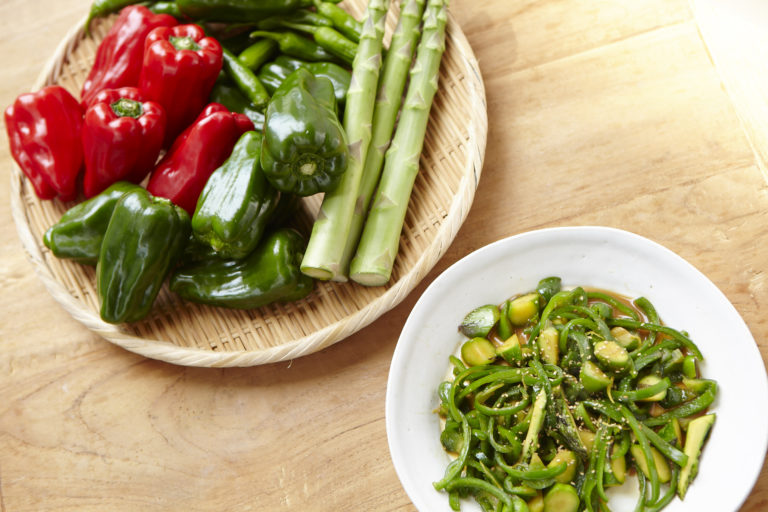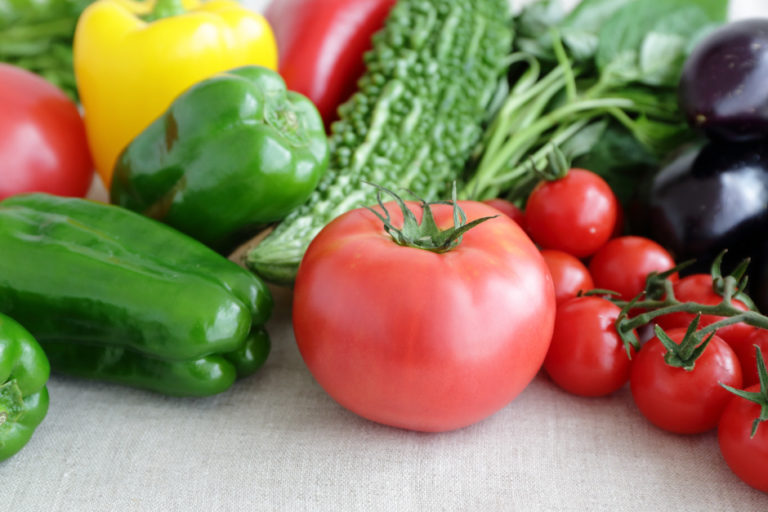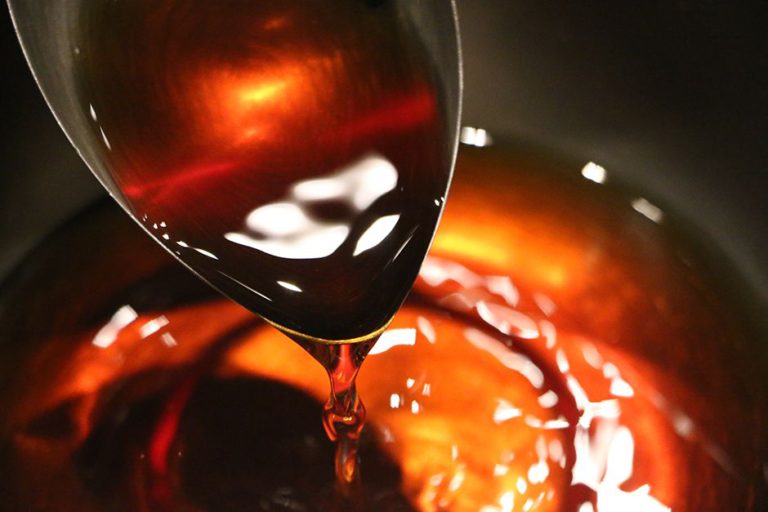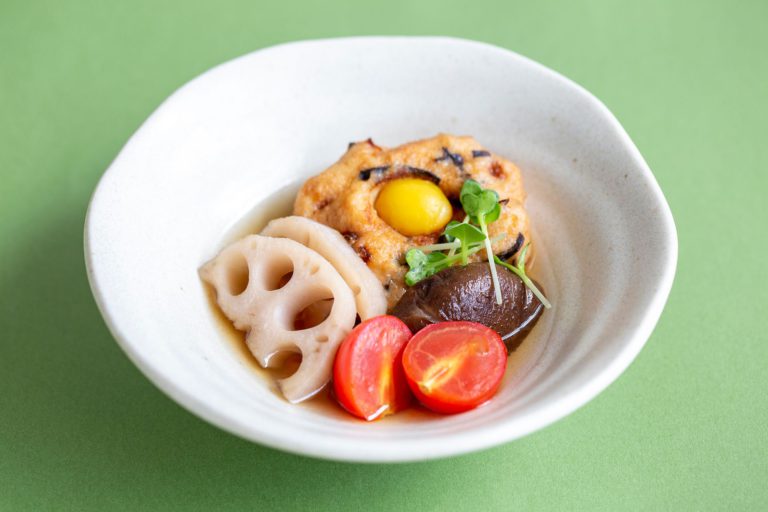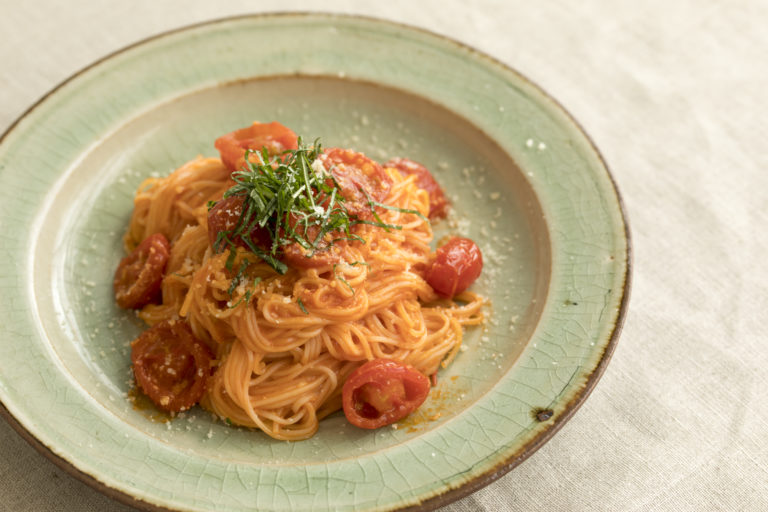Green Peppers
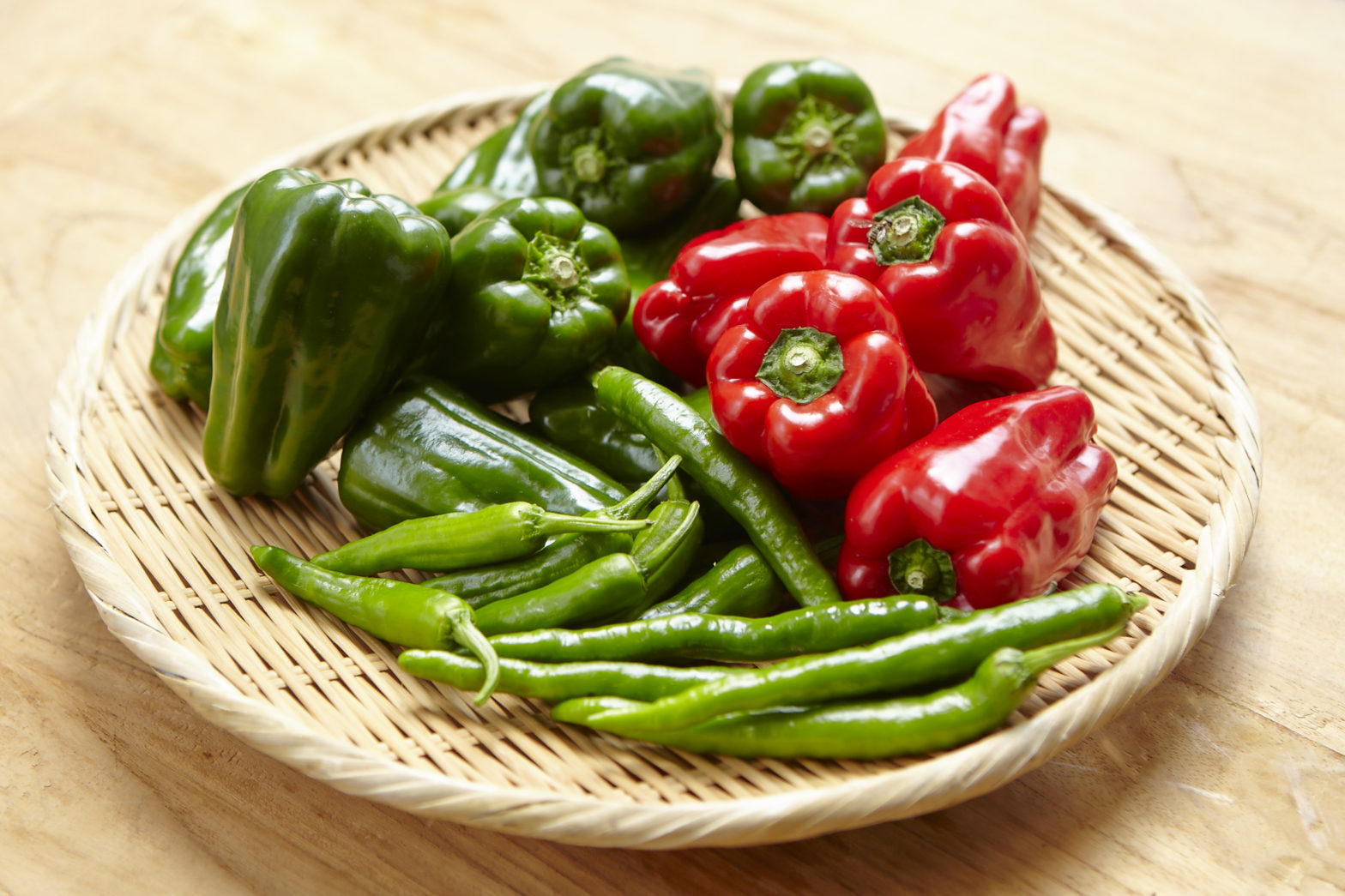
Vegetables that live and grow in an environment that is natural to them, in a time period that suits their vegetation.
They grow at a natural speed, to a natural size, teeming with life and taking a balanced shape, all of which results in a robust taste.
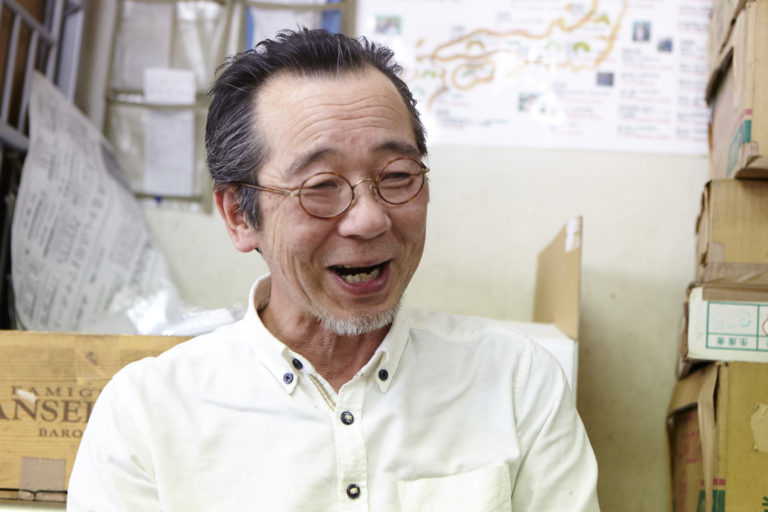
In the Tsukiji District of Tokyo, there is a vegetable shop called “Tsukiji Mikuriya”, run by the discerning Mr. Satoru Uchida. We asked him to share his expertise and tell us about the beauty of seasonal vegetables in relation to their seasons. Mr. Uchida, who has worked 33 years with vegetables, has become a reputed authority with his unique view on the subject. He is well trusted by restaurants that are particular about their ingredients and has become known as a “famous vegetable connoisseur”. He is widely active all over Japan in conferences, television, magazines, and more.
This time we picked up a leading character among summer vegetables, the green pepper. He spoke volumes on topics like the transition from having basic knowledge on vegetables to becoming an expert, cooking methods that suit each season, and the wonders of seasonal green peppers.
Green Peppers: Why In June? The Reason Is In Shun.
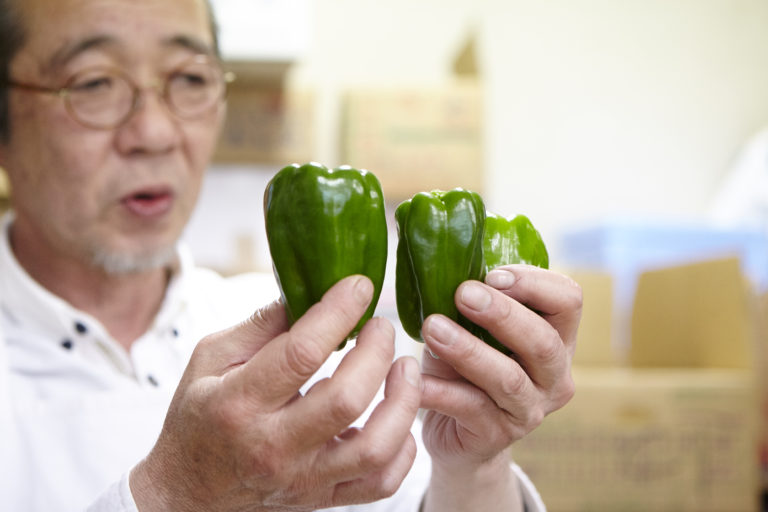
The temperature rises with the faint feelings of summer, beginning in June, and people march outside wearing t-shirts instead of coats.
The vegetable world also faces the arrival of summer, led by the green pepper. Green peppers show up year-round in supermarkets, making it difficult to tell exactly when their season begins and ends, but it is between June and August.
“Understanding vegetables and their prime seasons requires knowing their origin and what weather or environment they were grown in,” says Mr. Uchida.
Green peppers originate in tropic climates like Central and South America. They were originally red peppers, but in the process of being transported to Europe they changed their form, and diversified into pungent and sweet species. Paprika and green peppers belong to the sweet species.
The Central and South American environments are close to Japan in temperature, humidity, soil, and so on, during the months of May through September, giving them a similar taste to the original item.
All 47 prefectures of Japan cultivate green peppers, but the warm, well-drained sands of Ibaraki seem best suited for it. Today, Mr. Uchida prepared some green peppers in from Ibaraki’s Hasaki City for our coverage today.
The Skills Of A Green Pepper Expert! How To Choose The Perfect Pepper.
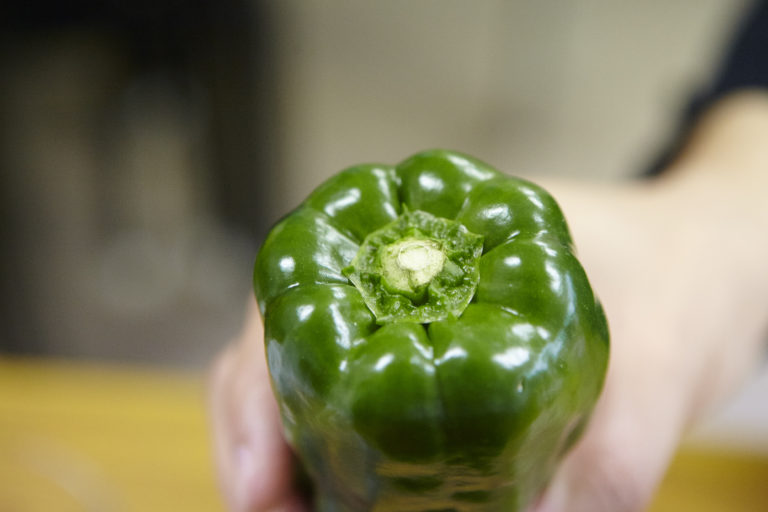
Understanding that one must know a vegetable’s origin and background in order to properly understand shun, next we discussed with Mr. Uchida exactly how we should pick our green peppers at the super market. The vegetable connoisseur told us the main picking points of a green pepper.
・A pale green color (not deep green)
・The “shoulders”, the raised portion of the pepper around the center axis, should be swollen and firm.
The pale green whitish feature is called the “cuticle layer” and is a thin skin that defends the vegetable against UV rays and dryness and is proof of proper cell division. The swollen shoulders mean it was hanging strongly from its branch, which indicates it absorbed its nourishment and grew well under the sun and blowing winds.
“Shun vegetables, following the principals of nature, have similar traits if they are cultivated properly,” Mr. Uchida tells us. He gave us the connoisseur’s 8 traits that he developed over years of working with every kind of vegetable, and that he believes applies to every variety.
Uchida's 8 Points For Vegetables
![]() Shape:Choose rounder vegetables.
Shape:Choose rounder vegetables.
![]() Size:It does not have to be large, but it should have weight.
Size:It does not have to be large, but it should have weight.
![]() Color:Light green is key.
Color:Light green is key.
![]() Balance:The shape and veins of the leaves should be even on the left and right sides.
Balance:The shape and veins of the leaves should be even on the left and right sides.
![]() Axis:Look for a smaller axis that is well centered on the vegetable.
Axis:Look for a smaller axis that is well centered on the vegetable.
![]() Fibers:The fibers should run straight up and down.
Fibers:The fibers should run straight up and down.
![]() Bud/Seed Bed:This is the sign of good vitality. Check seeds, buds, and seed bed numbers.
Bud/Seed Bed:This is the sign of good vitality. Check seeds, buds, and seed bed numbers.
![]() Choose vegetables that wither, not rot.
Choose vegetables that wither, not rot.
Shun is split up into "early season", "peak season", and "late season".
There are a few more points I want to convey to allow you to enjoy seasonal vegetables to the fullest.
Based on domestic, open-air cultivation, there are three different seasonal time periods for all vegetables.
They are “early season”, “prime season”, and “late season”.
Even in the same season, the characteristics and tastes change from early season to late season.
- Early Season
- The first vegetables to arrive in a season. They are full of water and the fibers are soft.
It is an exciting event at the beginning of a new season. - Prime Season
- The taste reaches its peak and shipment sizes increase.
- Late Season
- This is the final stage. There is less water content and the skin is tight and tough.
You can feel and taste the melancholy of a passing season.
June green peppers are early season. There is a lot of water stored in them and the skin is thin and soft.
Early Season Green Peppers Baked Whole
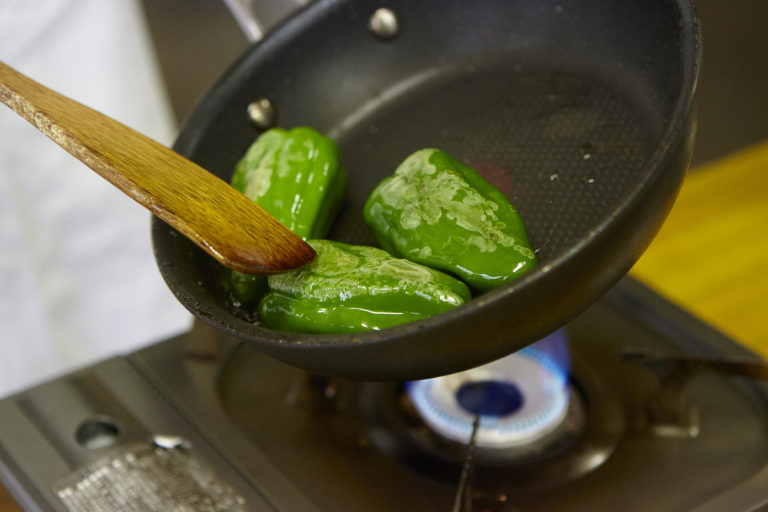
“Vegetables approaching their season are best used in a simple dish. These vegetables that are still full of water are absolutely delicious when cooked in oil,” says Mr. Uchida. When we asked for his recommendation, he said that it is decisively best to bake the vegetable whole and eat it.
At the head of early season peppers, there is a seed that connects to the base of the hypocotyl that is still white and full of water. Don’t throw it away, because you can eat that too.
“If we were talking about humans, the hypocotyl is like where a mother and child are connected. Its purpose is to provide nourishment, so it is incredibly delicious,” Mr. Uchida tells us very enthusiastically.
You can either open up several holes using a toothpick, or fold creases into the skin and fry the whole pepper thoroughly in a large amount of oil, then add water and steam it. This will bring out the full flavor of the whole pepper, including the seeds.
Here we have brought out the real beauty and incredible taste of a vegetable in the simplest way.
By adding a tomato sauce, made from late spring season tomatoes, to our early summer season green pepper, you can almost taste the changing seasons with a stylish combination of seasonal produce.
A green pepper fried fully to its seeds and axis.
More than just sweet and juicy, it has thickness and crunch, all of which make it the perfect staple for a satisfying meal. It might be appropriate to call it a green pepper steak.
We asked Mr. Uchida for a few other recipes for early season green pepper. If you are interested, have a look at the recipe below.
When they sit down to eat, I want them to talk about how delicious the seasons are
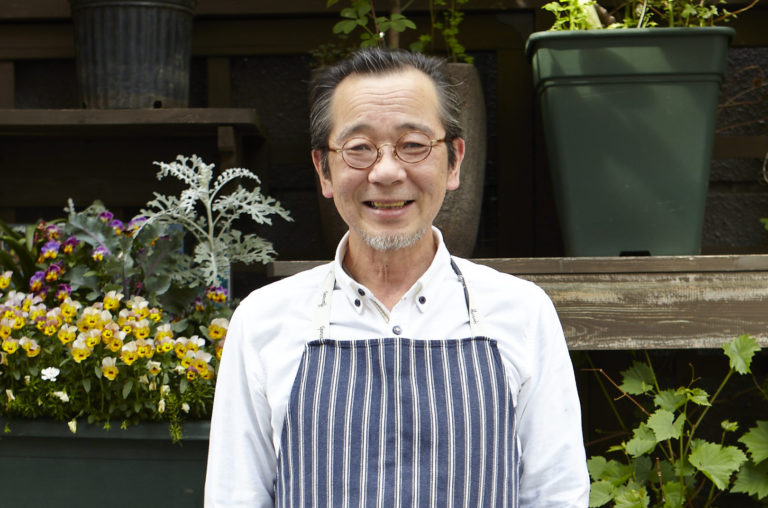
There is a certain sensitivity Japanese people possess, having been subconsciously conditioned in an island country that experiences all four seasons.
As the cherry blossoms begin to bud, the town scenery changes to a soft pink. Spring at last! There’s no real set time or duration for the beginning and end of spring, you can only tell by the scenery, weather and the feeling in your skin.
The same follows for vegetables.
“The way an asparagus becomes sinewy toward the end of the spring season, or the soft feel of the light green skin of a green pepper makes you excited for the beginning of summer. I want to spread that wonderful conversation Japanese people have while sitting around the dinner table, talking about the seasons,” says Mr. Uchida.
“Food” should be something delicious that fills your heart with joy.
Knowing shun, you can feel the joy of the four seasons and the interest of a connoisseur. More than anything I want you to experience the incredible power seasonal vegetables can have. In that moment, your body will be happiest.
We hope you look forward to the next seasonal vegetables we introduce.

